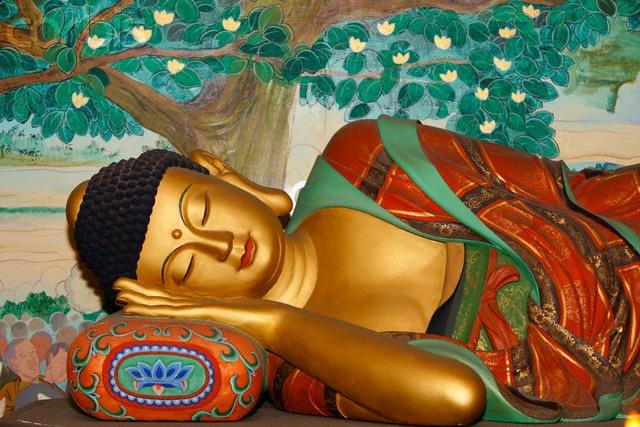From the tranquil sleeping posture of the Buddha, He lays tilted to the right, with his left arm extending along his body and his right arm supporting his head. This is a serene posture, creating peace and stability for the physical body and most importantly, for the awakened mind.
The story of the Buddha’s sleeping posture is one of the well-known stories in Buddhism, with multiple layers of meaning that offer deep insights for contemplation.

The reclining posture of the Buddha
When asked about his sleeping posture, the Buddha explained to his disciples, “I have found a suitable posture for myself, and I intend to maintain it without any intention of changing it. While sleeping, my body rests, but my mind remains awake. However, you cannot lie still in one posture because you are still searching for a suitable posture.”
You say that you cannot lie still in one posture throughout the night, but the problem does not lie in the movement of your body, but in the unsettledness of your mind. If the mind is not settled, the body cannot be calm.
As for me, I have already overcome that. When I go to sleep, my mind is no longer occupied with anything. This body lies down, resembling a corpse. Have you ever seen a moving corpse?”
From a scientific perspective, in this reclining posture, the internal organs are aligned properly, facilitating better blood circulation, and the spine is stretched, reducing the pressure exerted by the weight of the upper body. This demonstrates the importance of the correct sleeping posture for human health.
Ancient natural healers believed that lying tilted to the right and slightly contracting the limbs would be beneficial for the body. Modern science has also proven that in this posture, the muscle groups throughout the body can relax the most, helping you achieve a restful and deep sleep.






























